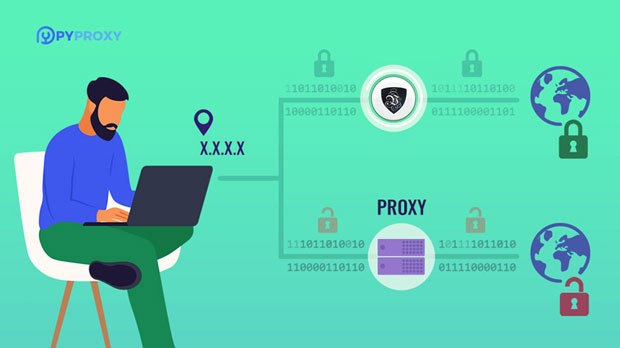In the realm of network security and traffic management, a Forward Proxy is a significant tool used in static proxy modes to manage requests from clients to the internet. It acts as an intermediary between a client and the external network, masking the client's identity while forwarding their requests to the internet. This proxy type is typically employed in scenarios such as corporate networks, educational institutions, and organizations that wish to control and monitor internet usage. However, like any technology, it comes with its set of advantages and limitations that need to be carefully considered in practical deployments. This article will dive deeper into the benefits and challenges of implementing a Forward Proxy in static proxy mode, providing insights that can help clients make informed decisions. What is a Forward Proxy in Static Proxy Mode?A Forward Proxy in static proxy mode is a server that sits between a client and the internet, routing the client's requests to external resources while hiding their actual IP address. This form of proxy is termed "static" because its configurations and rules remain fixed over time, without dynamically changing based on network traffic or specific user requests. Unlike reverse proxies, which manage incoming traffic to a server, forward proxies handle outgoing traffic from the client to various external services or websites.Advantages of Forward Proxy in Static Proxy Mode1. Increased Privacy and AnonymityThe primary advantage of using a Forward Proxy is the enhanced privacy it offers to clients. By routing traffic through the proxy server, the client's real IP address is hidden from external servers. This prevents external sites from tracking the client's location, browsing habits, or personal information. In environments where privacy is a concern—such as corporate offices or educational institutions—this feature becomes invaluable. Employees and students, for instance, can access the internet without exposing their identity, thereby preventing surveillance from malicious third parties or even from other entities within the organization.2. Content Filtering and Access ControlA Forward Proxy allows for granular control over which websites or online services clients can access. This is especially useful for organizations that wish to enforce strict internet usage policies. Through the proxy server, administrators can block access to inappropriate or non-work-related websites, thus increasing productivity and ensuring that resources are not misused. Educational institutions and corporate environments frequently deploy forward proxies to filter content and prevent access to harmful websites or services, making them a powerful tool for governance and security.3. Caching and Performance OptimizationForward Proxies can also provide performance enhancements through caching. When a client requests a resource, the proxy can store that resource in its cache for a certain period. If the same resource is requested again, the proxy can serve the cached version instead of fetching it from the internet. This reduces the load on external servers and speeds up response times for frequently accessed content, improving overall network performance. Additionally, caching can significantly reduce bandwidth usage, which is particularly beneficial for organizations with limited internet bandwidth or data caps.4. Bandwidth Management and Load BalancingIn large networks with multiple clients, a Forward Proxy can help manage bandwidth more efficiently by directing traffic through a central point. This allows administrators to monitor and control bandwidth usage, ensuring that no individual user or service consumes disproportionate resources. Moreover, in certain configurations, a forward proxy can implement load balancing strategies to distribute incoming traffic more evenly across servers, optimizing network utilization and preventing overloading of specific resources.5. Enhanced SecuritySecurity is another key advantage of Forward Proxy in static proxy mode. The proxy server acts as a barrier between the internal network and external internet traffic, which means malicious actors targeting external websites are less likely to directly access the client’s internal network. The proxy can also be configured to block known malicious IP addresses, URLs, or content, protecting users from accessing potentially harmful sites. Furthermore, some forward proxies incorporate SSL/TLS interception, which allows them to scan encrypted traffic for threats, adding an additional layer of security.Limitations of Forward Proxy in Static Proxy Mode1. Single Point of FailureA significant drawback of Forward Proxies in static proxy mode is the single point of failure (SPOF) they introduce to the network. If the proxy server becomes unavailable or experiences issues, all client requests will be affected, potentially leading to network downtime or connectivity problems. This can have severe consequences for organizations that rely heavily on internet access for daily operations. To mitigate this risk, redundancy measures such as deploying multiple proxy servers or load balancing techniques are often implemented.2. Performance BottlenecksAs the forward proxy acts as an intermediary for all client requests, it can become a bottleneck if not properly configured or scaled. If the proxy server is not powerful enough to handle the traffic load, it can slow down the communication between clients and external services. This can result in higher latency and reduced network performance, especially in high-traffic environments. Furthermore, if the caching mechanism is not optimized, the proxy may not provide the expected performance benefits, and may, in fact, slow down the network.3. Limited ScalabilityScalability is a concern for forward proxies, especially in large or growing networks. As the number of clients increases, the static configuration of the forward proxy may need frequent updates to handle the increased traffic. This lack of flexibility in adapting to changing network conditions or requirements can hinder the ability of the forward proxy to scale effectively. Dynamic proxies, in contrast, can adapt to traffic patterns in real-time, whereas static proxies require manual adjustments.4. Vulnerability to MisconfigurationThe static nature of Forward Proxies means that any misconfiguration in the setup can lead to security vulnerabilities or disruptions in service. If an administrator fails to properly set up access controls, content filtering rules, or caching policies, the proxy server may inadvertently allow harmful traffic or reduce the effectiveness of content filtering. Misconfigured proxies can also create security loopholes that cybercriminals could exploit, putting the internal network at risk.5. Limited Application in Dynamic EnvironmentsStatic proxy mode is not suitable for highly dynamic environments, where network conditions or client needs frequently change. Since the proxy configuration is fixed, it may not be able to respond to sudden fluctuations in traffic patterns or rapidly evolving security threats. In such environments, more dynamic proxy solutions—like those used in reverse proxy configurations—may be more appropriate to address the changing requirements of the network.In conclusion, Forward Proxies in static proxy mode offer significant benefits, including enhanced privacy, content filtering, caching, bandwidth management, and improved security. However, they also come with limitations such as single points of failure, performance bottlenecks, scalability challenges, and vulnerabilities due to misconfiguration. To make the most of forward proxies, organizations must carefully weigh these advantages and limitations against their specific network needs. In environments where privacy, content control, and security are paramount, forward proxies can be invaluable, but their drawbacks must be managed through proper configuration, redundancy, and scaling strategies.
Sep 10, 2025



































































